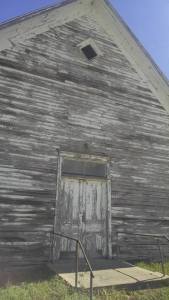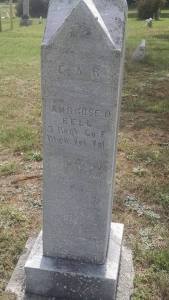On our way home from Mackinac Island, Issa, Sara, and Issa’s mom decided it would be great fun to find more ghost towns, since we’d had such success with Pere Cheney. We used a website we found that helped us identify a couple more that weren’t too far out of our way: Star City and Podunk (yes, Podunk).
Star City is west of Houghton Lake on M-55, about 5 miles. Turning north on Star City Road, the cemetery is on the left, and the one remaining structure, an old school building, is a bit further down on the right. The school building is located on private property, so we were only able to photograph it from the road without exploring much:

The cemetery is easily accessible, though, and has both Civil War veterans and more recent burials as well.

It’s hard to find much information about Star City’s origins or its demise, other than it was first set up with a post office in 1872 and called “Roy,” and later “Putnam” when the post office changed hands. Then, in 1885, it was officially named Star City, and the name continued until 1923, when it was disbanded. There is a story that the entire area was first known as “Starvation Lake,” after a trapper who was found dead in his cabin from apparent starvation. Whether this is true or not is unable to be verified.
After this, we made our way south of Houghton Lake to the real, actual Podunk, MI. Located on the corner of Ziemer Rd. and Shearer Rd. off of M-18 in Gladwin County. There’s even a sign!

All that’s left here is an old school house in the middle of a field, and a former church that’s now a private residence (to protect their privacy, we didn’t photograph it–plus, it really doesn’t resemble a church so much anymore).

Almost nothing is known about Podunk–its inception or its end. The thought is that it may have started as a lumbering community, turned to farming, and then just petered out over time. Some online commentators have said there used to be a dance hall in town for entertainment, but that’s about all there is to know! There’s no cemetery attached to the community that we could find.

